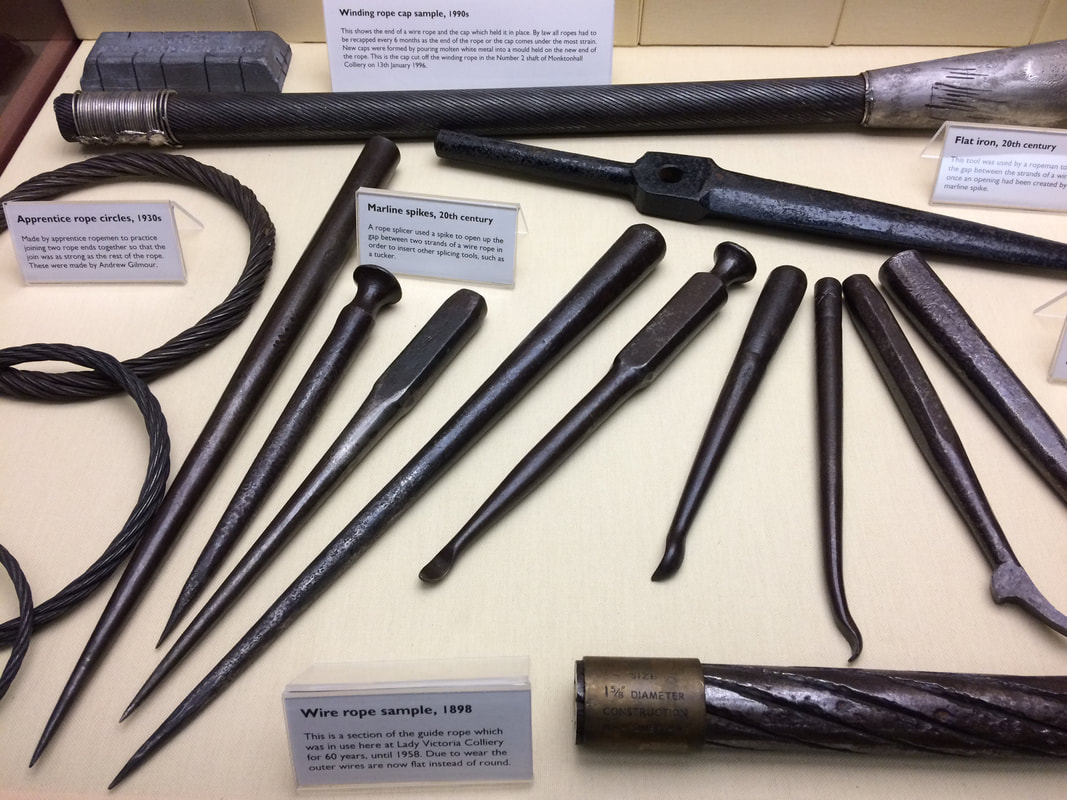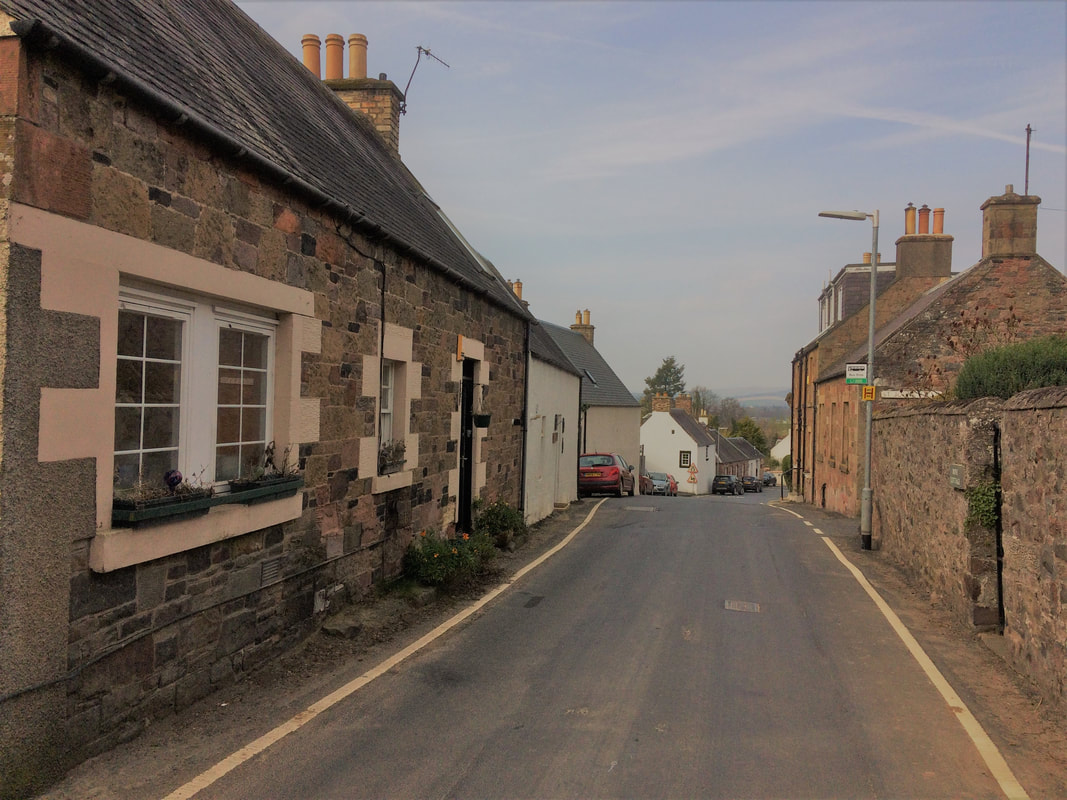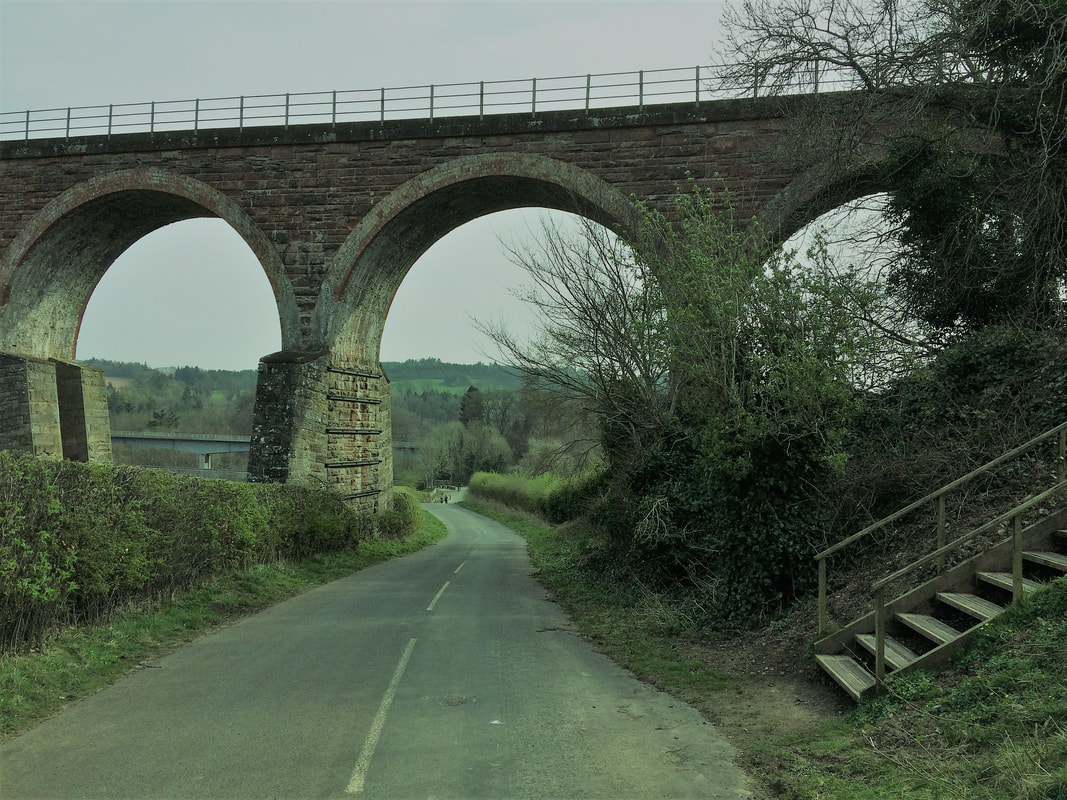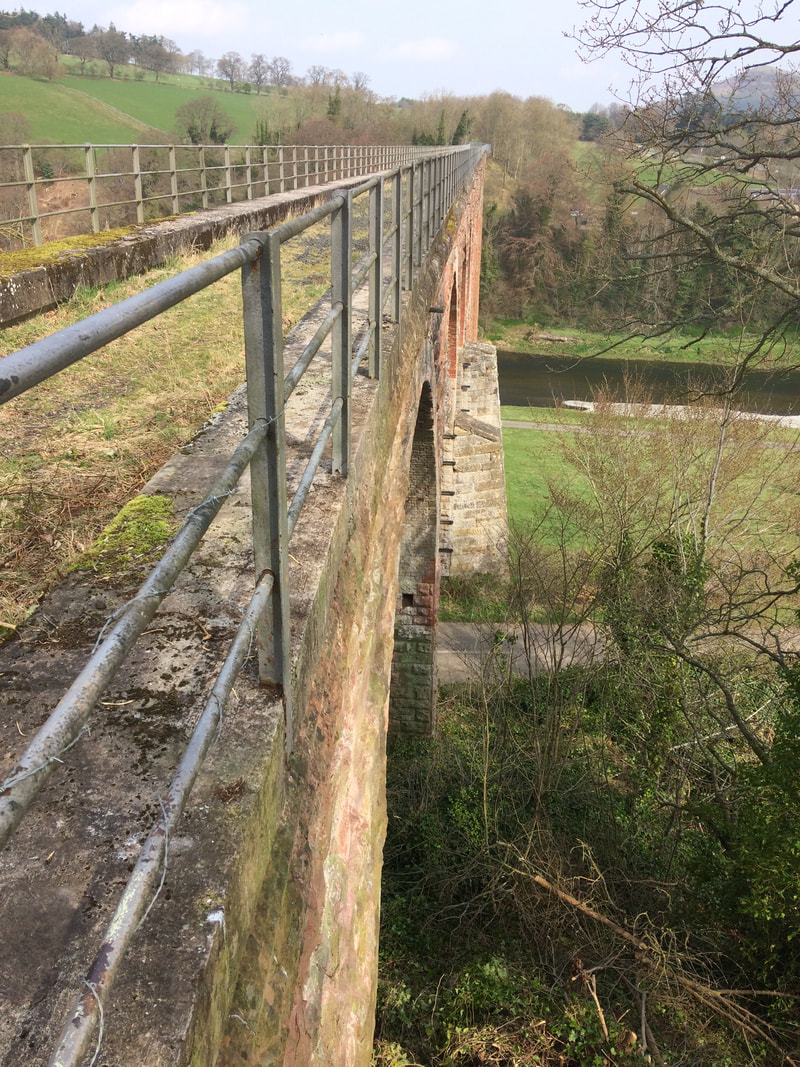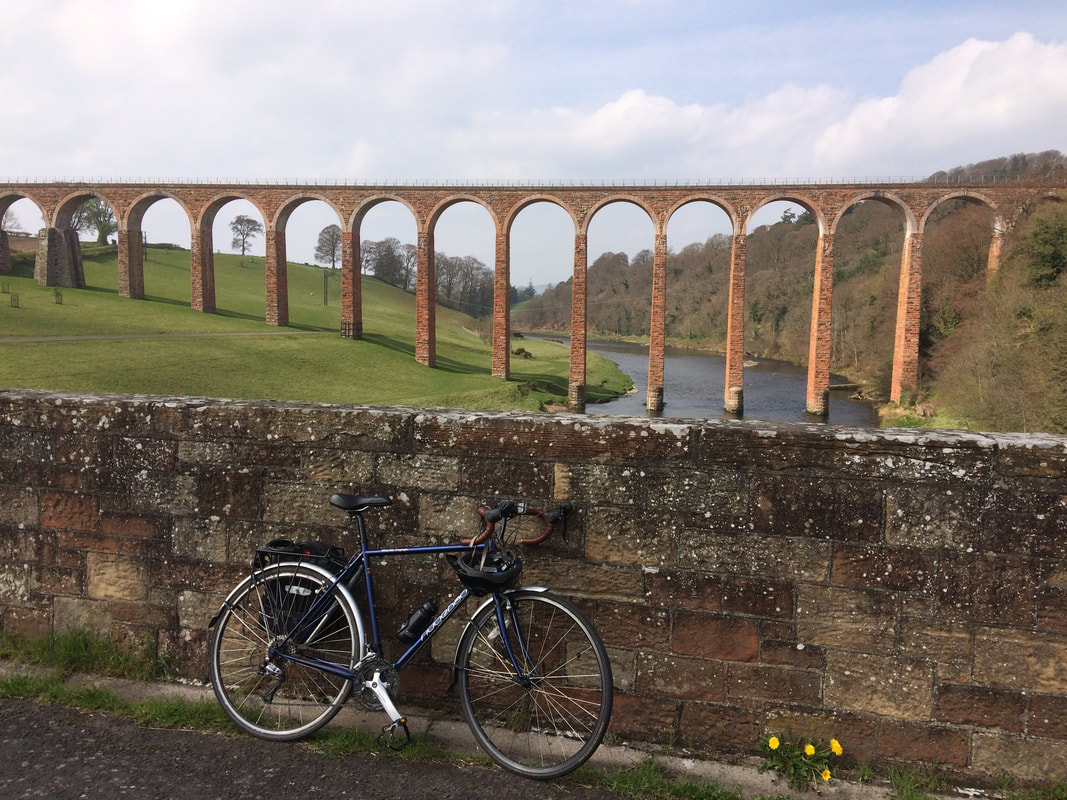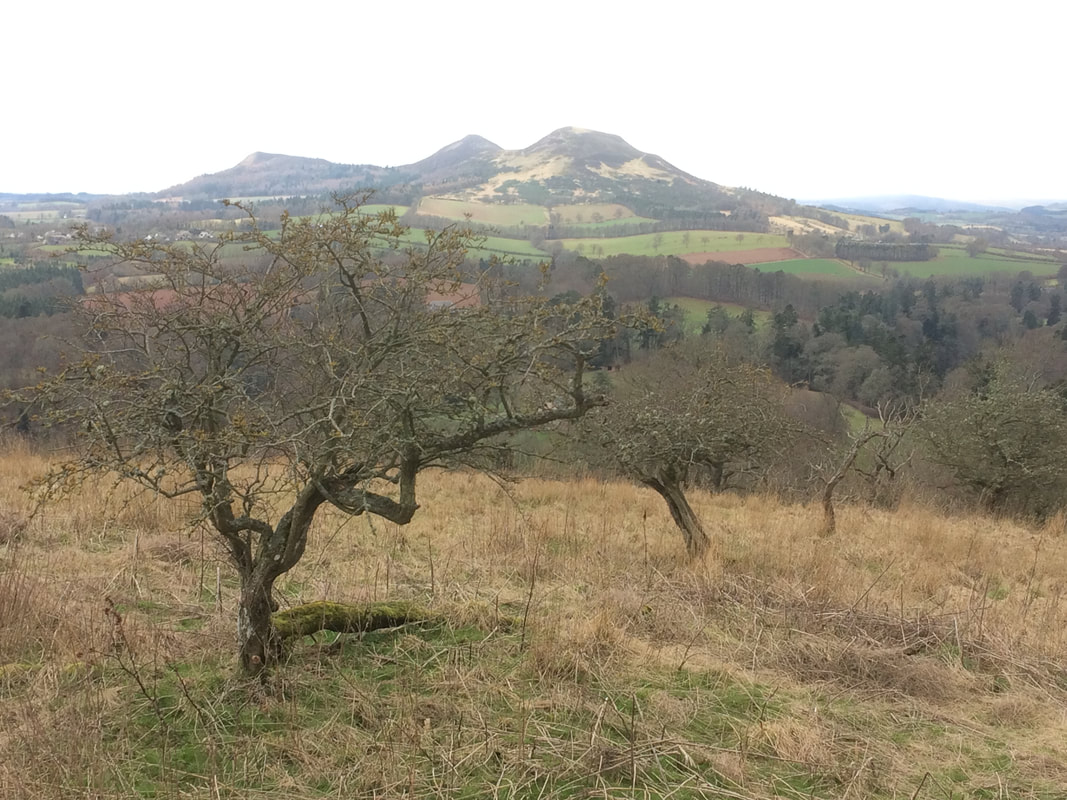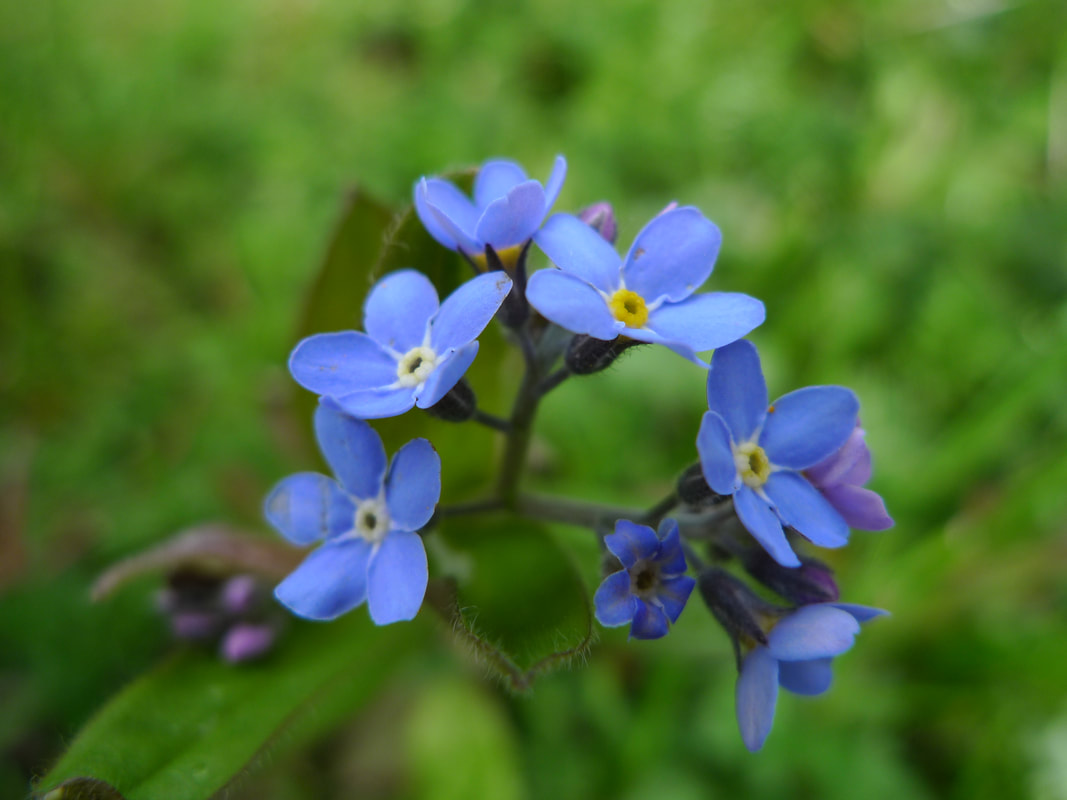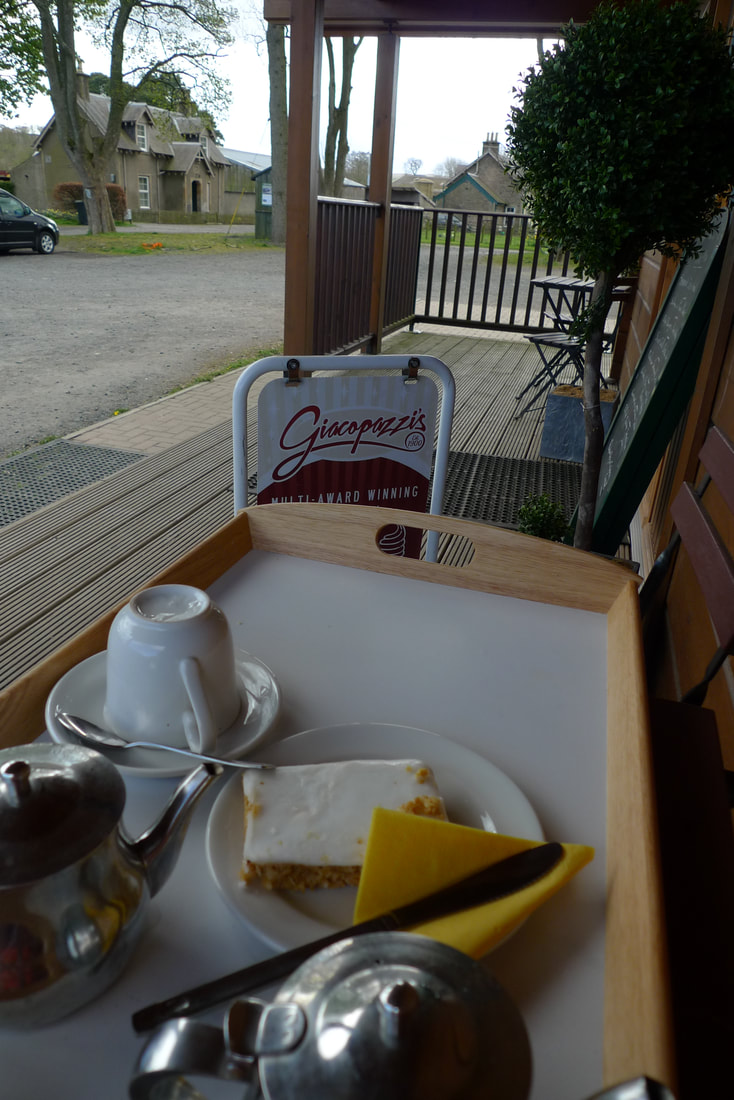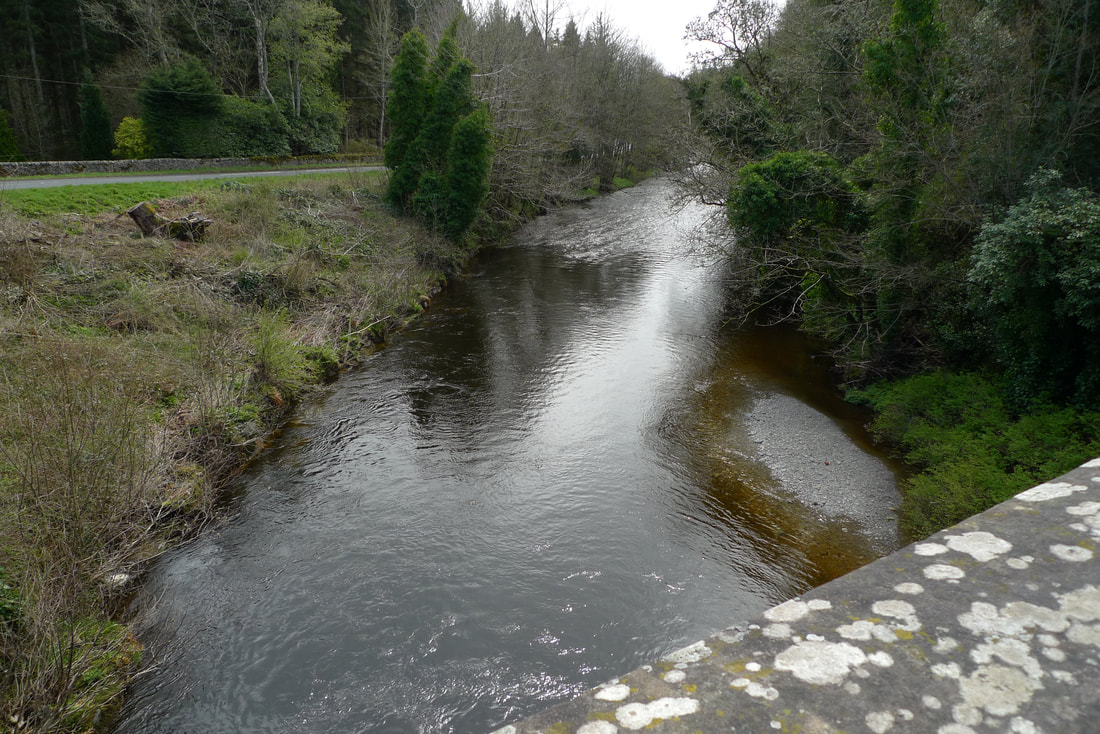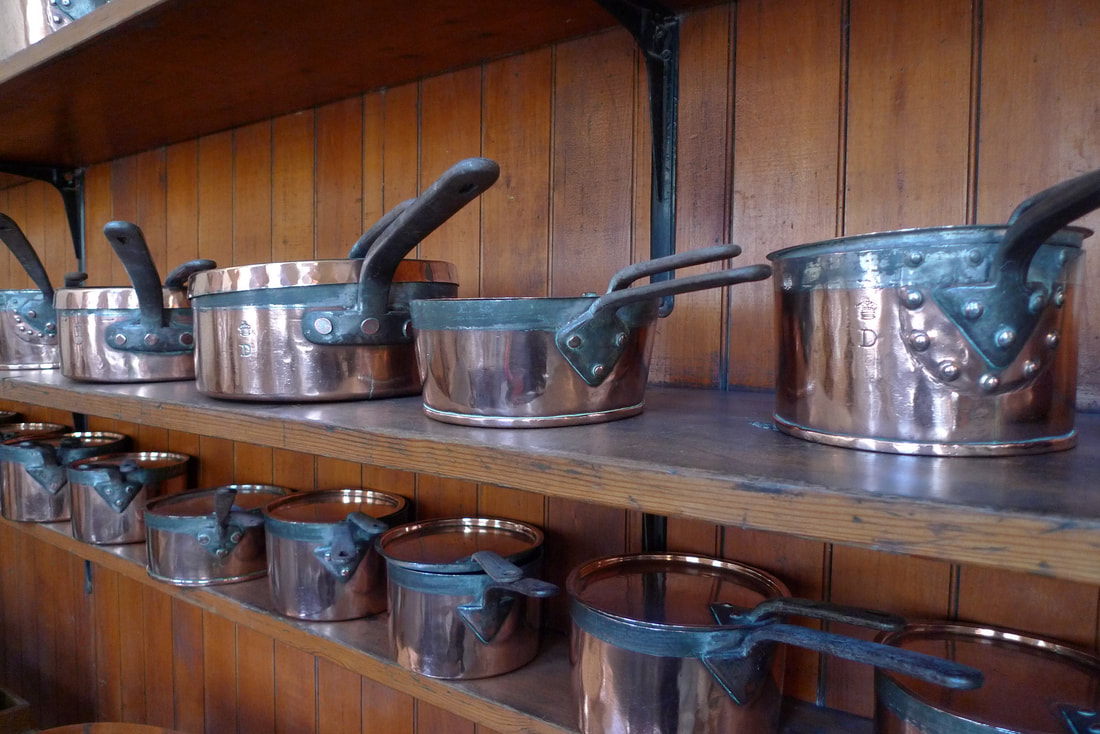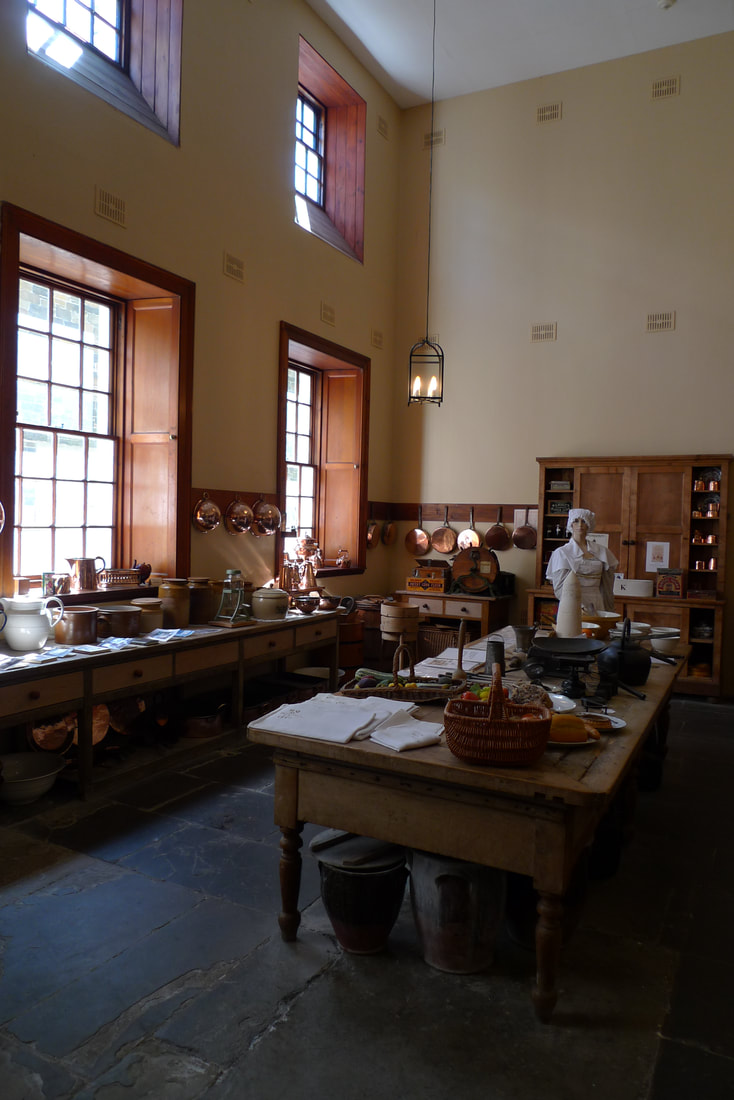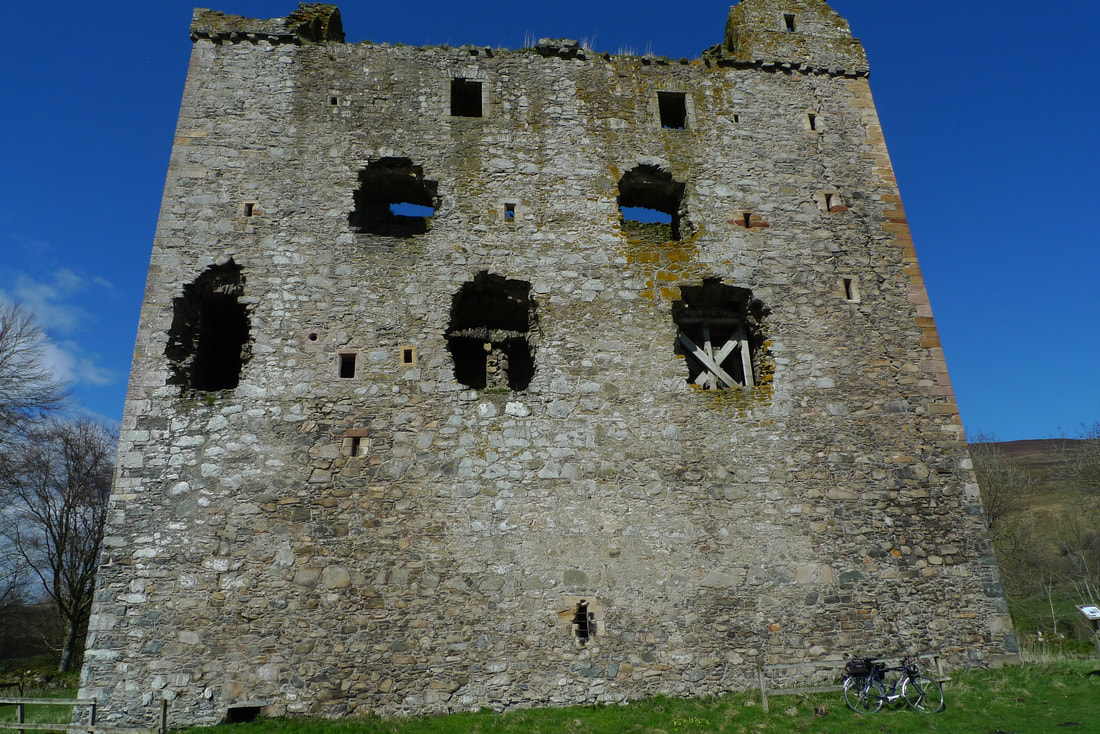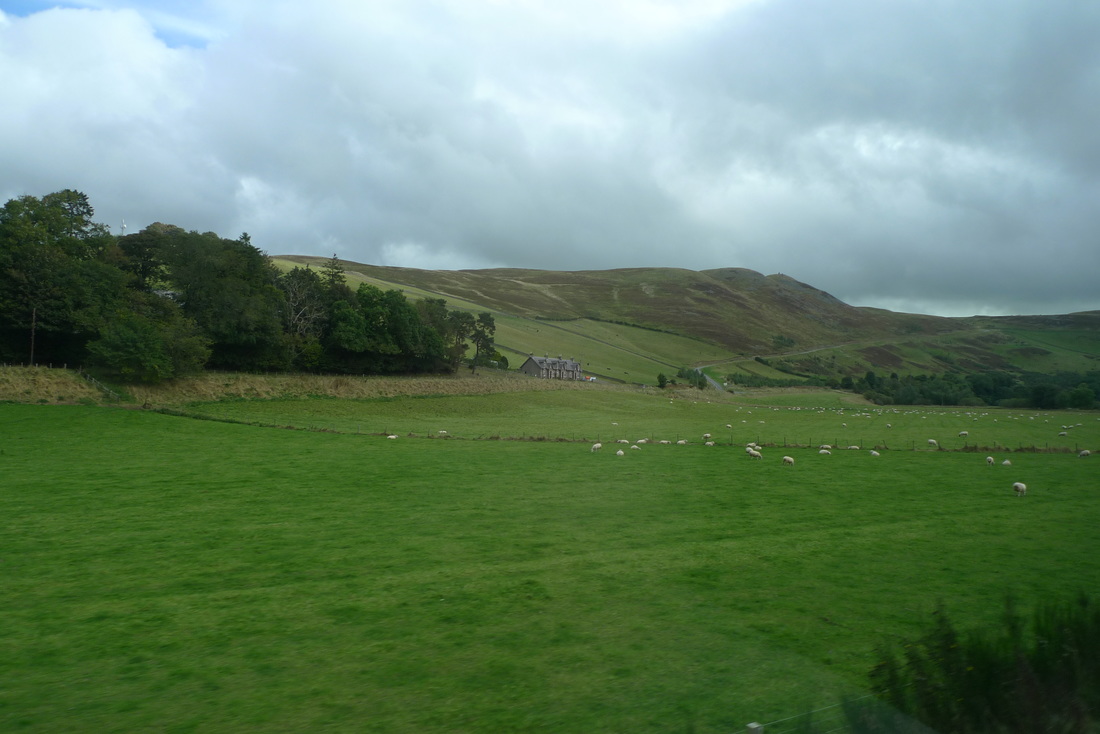|
The highlight of this museum is a guided tour by a former miner. These men are full of stories and provide a fascinating insight into their working life. The museum is easy to reach from Edinburgh using the Borders Railway. It is walking distance from Newtongrange Station.
How to Get There The museum is 8 miles from Edinburgh. It is located alongside Newtongrange train station on the Borders Railway, so you don't really need to use a bicycle to reach it. There are plenty of cycling routes in the Scottish Borders, so you could do a stop-off at the museum then get back on the train to head further south. The train takes about 20 minutes from Edinburgh.
A path links the station to the museum. It is uphill and really unsuitable for cycling so if you did bring the bike you will be pushing it or locking it up at the station. A nice feature of this path is that it has information panels that tell the story of the mine.
At one time coal mining was a hugely significant part of Scottish life with 148,000 miners employed in Scotland at the industry's peak. The path takes you past a scene of industrial decay with mine buildings looking like they are being reclaimed by nature. The museum is contained within the site of the Lady Victoria Colliery. It opened in 1895 and was named after the wife of the Marquess of Lothian who owned the land. The mine closed in 1981 and became the museum.
As you approach the entrance to the museum there is a small garden area that has gorgeous flowers and plants. A wheel from a winding engine has been put to use as a water feature and there are cute little paths winding through the trees and bushes.
The Victorian-era industrial architecture is beautiful with huge windows, impressive brickwork and glazed tiles inside.
Contrast this to the functional concrete bridge that is attached to the building and crosses the A7. This was built in the 1950s to link the building to a bath house.
Before the bath house was built the miners had to go home dirty. Their houses had a tin bath that was filled up with a kettle. If there was more than one miner in the family the most senior man got first shot at the bath. My tour guide, John, said of the youngest son, "By the time you got to the bath it was not very warm and not very clean."
Signing-up to one of the guided tours is the best way to experience the mine. My guide, John, had started working as a miner at the age of 15. He wore orange overalls and a helmet with a lamp. John talked through the various stages of going to work in the mine. First he picked up his lamp and then walked down the gangway. "This was the last opportunity for men to have a cigarette so this gangway was always thick with smoke. "
The next stage of John's journey to work was the lift down to the mines. It was a double deck lift that could take 30 men on each deck and took 1 minute and 20 seconds to reach the pit. "Made my stomach go," John told us.
The lift had two speeds and when it was used to carry coal back up to the surface it took just 40 seconds. "The lift operator was a trusted man who could never leave his post and had to make sure that he got the right speed when carrying men in the lift. Can you imagine if he used the coal speed when the men were in the lift?" The tour includes a visit to the engine room where the giant winding machine that carried the lift up and down to the mine is turned on for visitors. The room smells of engine oil and it is quite a thrill to see this huge wheel being turned by massive pistons. This was the most powerful winding engine in Scotland.
The largest part of the mine site is an area where coal was sorted and carried around in railway wagons. There are tracks, gangways and control booths spread over a giant area.
There is lots of interesting equipment to spot on the way around the tour route, including a National Coal Board train engine and coal wagons.
Our tour visited a reconstruction of an underground mine tunnel. It felt very realistic and John provided an excellent insight to life below ground. "No toilets in the pit" he told us. "You found a corner and then put a stone over it and put an x on the stone with chalk, so other men would know not to touch it!
John pointed out the first aid station. This included a morphine container encased in concrete as the men used to break it open and steal it.
"120 pit ponies lived underground and never saw daylight," John said. They had been used to haul coal wagons "Once they tried to take the ponies up to the surface in the lift, but they kicked and made such a fuss. When they were retired and went to the surface they were found to be blind." Later, in the museum, I found an eye guard for pit ponies. The 1911 Coal Mines Act made it mandatory for the ponies to have eye protection from the uneven sharp walls of the pit. It is upsetting to think that prior to this date the animals would be easily injured when walking through the tunnels.
Pit ponies learned how to open the miners' sandwich tins. These metal tins had been invented to stop rats from getting at the men's food, but the ponies could figure them out and steal a cheese and jam sandwich if a miner was not careful!
A stark illustration of how challenging mining life could be was provided by John: "In the days when private companies ran the mines and a miner died they lost their house; the family had to leave." The cottages that you see around Newtongrange village had been built for the miners.
One mine manager was particularly strict and used to walk around the village to see if any of the gardens were untidy. If they were the miner who lived in that house was called into the manager's office and given a row and his wages docked to pay for some other men to tidy up the garden.
Look out for the canaries- the museum keeps a few in cages. You will probably hear them chirping before you see them. Mines used to breed their own canaries as they were the best way to detect carbon monoxide. The birds would be overcome by the poisonous gas before the miners and this gave the men an opportunity to escape.
The museum site is massive as you can see from the map above. It includes an impressive collection of artifacts that have been put together to tell the story of the coal industry. It begins in the 12th century when monks were the first to mine coal. I was surprised to learn that coal is used in the manufacture of many products, including paint, batteries, lipsticks and soaps.
I read about a job that young boys had been employed to do- Trappers- which involved opening and closing ventilation doors for passing coal wagons. These boys sat on wet ground, sometimes up to their knees, for 12 hours per day performing this repetitive task. It was common for these poor lads to subsist on a single oatcake during their shift, so I felt lucky to be able to enjoy a very fine Empire Biscuit with my coffee in the museum's cafe.
If you fancy something more substantial the cafe has a good selection of sandwiches, burgers and baked potatoes.
I really enjoyed my visit to the museum. Even if you do not have a strong interest in coal mining you will find it fascinating, particularly if you take the tour from one of the ex-miners with their unique insight into this world. The museum is open 7 days per week and there is an admission charge. Visit the website for details. The Mining Museum is in Midlothian. Visit my Midlothian page for ideas of more places to visit in the region. I used the Borders Railway to travel to the museum. Read my blog post 8 Reasons to Love the Borders Railway to find out more about this line.
0 Comments
One of the most magnificent landmarks in the Scottish Borders is the Leaderfoot Viaduct. It is a breathtaking sight with its 19 arches that span the River Tweed. The good news is that it is very easy to travel to. A 4 mile cycle from Tweedbank station on the Borders Railway will take you right there.
Getting There
The Borders Railway makes it easy to visit the viaduct. The last stop on the line, Tweedbank (around 55 minutes from Edinburgh), has a cycle path beginning at the station. This is well signposted, so just follow the blue cycle route signs to Melrose. This route is a mixture of traffic-free cycle path and quiet roads.
Once in Melrose you might want to explore a bit as this is one of Scotland's finest towns with lots to see. Read my blog about Melrose for ideas of things to do.
In Melrose head north on Abbey Street which becomes Annay Road. You will pass Melrose Abbey and soon reach The Abbey Mill. This began life as a corn mill, likely for the Abbey. Later it supplied barley to the Abbey brewery. These days the building houses a country clothing shop with a tea room upstairs.
I popped in for coffee and a scone that was still warm from the oven. It was fluffy inside and one of the best I have tasted. The room has enormous sash windows that let the sun pour in.
Once you reach the end of Annay Road you turn left, onto the B6361, to proceed through the village of Newstead. Oh-so-pretty cottages are jammed right against the road on both sides, flowers spilling from window boxes. Country village perfection indeed.
Once you reach the end of the village you take a left and then the first right (there are cycle route signs showing the way). This will take you to a road that has a gate across it, meaning a traffic-free cycle from here to the viaduct.
This road takes you through the site of a Roman fort called Trimontium. This is the largest Roman site in Scotland. You will come across this stone that summaries the story of the fort:
At regular intervals, along this road, there are interpretive panels that tell you more about the fort. There were several people walking this route and stopping by the panels.
Trimontium was a cavalry fort that housed about 1000 troops. It was well furnished with an amphitheater and bath house. Archaeological digs uncovered amazing objects, like a brass face mask with elaborately braided hair, a bronze cavalry parade helmet and a stash of silver coins. Most of these items can be seen in the National Museum of Scotland in Edinburgh and some at a museum in Melrose.
The first sight of the viaduct will blow you away. Queen Victoria described it as "immense" and that is exactly what it is. After miles of tranquil countryside and fields this man made structure suddenly appears and dominates, but in a way that seems to enhance the landscape.
It is interesting that we regard these once functional structures as beautiful and not detracting from the natural environment that they rest in. However, a nearby road bridge that carries the A68 over the river would be generally considered as ugly. You cannot deny that these Victorian railway structures have an elegance that is rarely matched by modern equivalents.
The road proceeds under the viaduct, but just before it does you will notice a staircase. Stash the bike and jump up there to take a look at the top of the viaduct.
Unfortunately you cannot walk across the viaduct as it is fenced off, but you are able to look down the grass covered track bed.
I found reference to a plan to have some train carriages with a tearoom and museum parked on the viaduct, but this never came to fruition. I quite enjoyed its forgotten state as it meant using my imagination to picture trains crossing it and to simply enjoy the thrill of being so close to such a magnificent structure.
The road beneath the viaduct provides the perfect vantage point to marvel at the incredible height and scale of the arches. From a distance the columns of the arches seem very slender, but close up they look indestructible.
Cycle on to the old stone bridge. It is from here that the best views of the Leaderfoot Viaduct can be had. This bridge dates from 1776. It used to carry the A68 road until it was replaced in 1974 by the adjacent modern bridge. Only cyclists and pedestrians can use this old bridge today, so you are able to pause here for as long as you like.
The story of the viaduct is that it was built to carry a railway branch line to Duns and then connect with the East Coast mainline. It opened in 1865. There was a storm in the late 1940s that caused damage to the line and passenger trains ceased at that point. Freight was still hauled across the viaduct until 1965 when the line was finally closed.
Although the Borders Railway from Edinburgh saw trains return to this part of Scotland it is unlikely that the route across the viaduct will open anytime soon. Even in its heyday the line received small numbers of passengers. Across Scotland there are many remnants of railway infrastructure and this viaduct is one of the most magnificent. I thoroughly recommend coming here and with it being so easy to get to using train and bicycle there is no excuse not to! Why not bring a picnic?
The Leaderfoot Viaduct is one of many places that you can reach easily from the Borders Railway terminus at Tweedback. Here are some other ideas:
Visit one of Scotland's best independent bookshops- Mainstreet Trading in St. Boswells. Head to Scott's View, one of the most beautiful views in the Scottish Borders. Explore Melrose where you will find a great selection of shops, an abbey and beautiful gardens. A Huge William Wallace, an Abbey, a Temple and a Famous View. A Day Out in the Scottish Borders11/10/2018
For a great day of exploring in the Scottish Borders take the train to Tweedbank and join the cycle path right at the station. It only takes 8 miles of cycling to see an abbey, an enormous statue of William Wallace, an outdoor sculpture and one of Scotland's finest views.
Getting There The Borders Railway makes it easy to visit the Scottish Borders. The last stop on the line, Tweedbank (around 55 minutes from Edinburgh), has a cycle path at the station. This will take you on a mostly traffic-free journey to the attractions highlighted on this blog.
After 1.75 miles you will arrive in Melrose, one of Scotland's most charming towns. Read my blog about Melrose for ideas of things to see and do in the town.
Just after Melrose the route takes you onto a road that is closed to vehicle traffic. This involves a steep climb, but this is followed by a smile-inducing descent. After passing through Newtown St. Boswells the route requires a crossing of the busy A68, but this is a simple case of pushing the bike over to the large island in the middle of the road and then pushing it over to the other side. This will set you off on a minor road that descends towards the River Tweed. Dryburgh Suspension Bridge Here you will find a suspension bridge, built by the Earl of Buchan. In fact, this Earl had a hand in most of the things that you will see on this journey. There is something exciting about crossing a bridge on a bicycle- the river views being seen from an elevated position and the fact that you can easily stop in the middle and watch the water flowing beneath you. This bridge has a walkway of worn planks that shoogle as bicycle tyres pass over them.
Temple of the Muses
On the other side of the bridge you will notice a round Greek-looking structure on top of a hillock, among woods. This is the Temple of the Muses. It can be reached by following the cycle path around the corner where you will find a gate and a short path up to the temple.
The temple was built by the 11th Earl of Buchan to honour the Scottish Borders poet, James Thomson. Thomson lived in the 18th century and famously penned the lyrics to 'Rule, Britannia!' The bust on the top of the temple is Thomson.
Inside the temple there is a sculpture of bronze figures, representing the Four Seasons which was a series of poems by Thomson. The sculpture was installed in 2002- prior to this there had been a statue of Apollo with 9 muses that went missing. The naked figures are clasping each other in a supportive embrace. All have different facial expressions. I was fascinated by the face with the eyes closed and head looking down, clearly deep in thought. What is she thinking?
This is simply a lovely spot to spend a bit of time. The bridge, the temple, the sound of the river- it is perfect. In the Springtime there are clumps of snowdrops to add a touch of panache to the woods around the temple.
Dryburgh Abbey
Just a two minute cycle will bring you to the next attraction on this tour. It is a classic ruin in the countryside, like something from one of those romanticised 19th century paintings.
The abbey is renowned as the burial place of Walter Scott, one of Scotland's most famous novelists. Earl Haig, the commander of British forces for part of the First World War, is also buried here.
Although the abbey is a ruin there is a lot that has survived. The immense size of the windows and doorways is awe-inspiring and the quality of the stone carving incredible.
I put my hand on the stone. It felt sturdy and strong and must have taken some effort to destroy. Successive attacks by English armies left Dryburgh in its present state. It was burned down in 1322, then re-built, then smashed up again in 1385, re-built again, and destroyed a final time in 1544.
The same Earl of Buchan who built the Temple of the Muses acquired the ruins in 1786 and took them into his care. He saw himself as a champion of Scotland's heritage and worked to preserve what was left of the building. He is also buried here.
The site is incredibly peaceful and gives a good impression of a canon's life of devotion and tranquility. Visit on a weekday in spring and there will be few other visitors. There will be birdsong and daffodils to brighten your walk.
The Chapter House is one of the best preserved parts of the building as it still has a roof and walls. Inside there was Gregorian chant music on a sound system and I took a seat to listen and imagine the life of a canon. They took a vow of silence and had to pray eight times a day, even in the early hours of the morning. If they looked sleepy an official would shine a lantern in their face. The canons had piss-pots under their robes so that they could relieve themselves without interrupting their duties.
Coffee at Dryburgh Abbey Hotel
Next to the abbey there is a baronial hotel. It must be a fine place to stay with its large bay windows, riverside location and garden walks, but I came for the coffee. There are lounges with sofas and armchairs that make for a relaxing cappuccino destination. The woods next to the hotel are thick with snowdrops in the spring.
Gigantic William Wallace
Do you want the good news or the bad news? Good news is that the next item on this tour is only 5 minutes away. The bad news is that it is mostly uphill. However, it is worth it to see the incredible William Wallace statue; the very first Wallace statue in Scotland. On leaving Dryburgh you will pass this pretty ensemble of a red telephone box, red post box and stone cottage:
Wallace is one of the most famous figures in Scotland's history, largely as a result of the 1995 Mel Gibson film. The same Earl of Buchan who built the temple and the bridge was also a big fan of Wallace and he commissioned the statue.
Leave the bike in the car park (there are racks) and take the 5 minute walk through the woods.
I was taken aback by how big this statue is. It looms up from the woods. This Wallace has a kilt and legs with bulging muscles. He carries a shield with a Saint Andrew's cross and his sword is as long as he is tall. I am sure the intention is heroic, but I think the curly beard and piercing eyes make it appear somewhat cartoonish.
Scott's View
1.2 miles of cycling from the Wallace statue will take you to one of Scotland's most beautiful view points. Scott's view is named after literary giant Sir Walter Scott- this was one of his favourite places in the Scottish Borders.
The view encapsulates all that is beautiful about this part of the Scottish Borders. A valley of trees, fields and river that rises to the three peaks of the Eildon Hills.
It is easy to see why Walter Scott loved it here. In fact, he came here so often that his horses knew to stop without being asked to.
The cycle is uphill with the final stretch on a twisty road. The view is already magnificent even before you reach the top, so you will be tempted to stop numerous times to take it all in. Once at the top you will find a lay-by so that cars can stop. There are benches for those who would like to sit for a while.
Every time that I come to this view I have to pinch myself that it really is this easy to reach from Edinburgh, using the train and a bicycle.
Scott's View features in my video about cycling in the Scottish Borders:
For more ideas of places to visit and cycle routes in the Scottish Borders visit my Scottish Borders page
Highlights of this cycle route:
Distance: Around 9 miles one-way, 18 miles return. Terrain: Mostly tarmac cycle paths, some A and B roads that have low traffic volume. Mostly flat. Getting there: Train to Tweedbank, around one hour from Edinburgh. Bicycle reservations not required. First off, take a trip on the Borders Railway
The Borders Railway is the newest railway and the longest railway to be built in the UK in 100 years. It is a superb tourism asset as it makes it much easier to access the scenery and visitor attractions of the Scottish Borders.
Read my blog: 8 Reasons to Love the Borders Railway You can also take a look at my video that shows how easy it is to use the Borders Railway for exploring the area by bike:
Journey time to Tweedbank is under one hour from Edinburgh. Once the train passes Gorebridge the view starts to become special with rivers, hills and sheep farms. There are tunnels and viaducts and the track twists and turns frequently, giving the line a unique character that makes it endearing.
Right next to Tweedbank station you will notice signage for cycle routes, so exploring this area by bike is very simple. Just follow the signs.
You want to take the path alongside the train track, heading back towards Galashiels. Follow the signs for Innerleithen.
Soon the path takes you alongside the River Tweed. I loved this ribbon of tarmac through meadows of little white wildflowers. It was a joy to ride.
This path smells sweet, fresh and woody. It is worth taking your time to spot the variety of wildflowers along the way.
There are also glimpses of Abbotsford, the home of Walter Scott, through the trees, on the other side of the river. This house, once home to one of Scotland's most famous literary figures, can be visited by bicycle, but I saved this for a future trip.
Further on, the road passes a trio of impressive timber-framed houses. They have gorgeous gardens and large bay windows looking onto the river. It looks like a scene from a country living magazine where everything is photogenic and perfect.
After about 3 miles on this road you take a left, crossing a stone bridge over the River Tweed. This will take you towards Selkirk.
The approach towards Selkirk is via a cycle path that runs alongside the busy A7. This is the least interesting part of the journey because you are just looking at a main road, but it does not last for long and it is superb that a segregated cycle path has been provided on this road.
The route does not take you into the centre of Selkirk, but passes the outskirts where there are impressive mill buildings, some ruined, some beautifully restored.
You get a great impression of how significant the textile industry had been in this town from the scale of these buildings. At one point it provided jobs for over 1000 people. It is sad to witness this visual display of the decline of an industry, but there are also positives to be found. Still in operation in this area is Lochcarron which weaves the largest range of wool tartans in the world. There is a visitor centre, shop and cafe.
From here it is only 3.5 miles to reach Bowhill House. This is by means of the A708, but don't worry because this is one of those quieter A-roads. Whose side are you on? The road passes fields where a great battle took place in 1645, the Battle of Philiphaugh. Imagine over 5000 men exchanging musket fire. You cannot tell who is on the side of the Covanters and who is on the side of the Royalists because there are no uniforms. Only a piece of paper or grass pinned to their hat symbolises which side they fight for. I wonder how many of the deaths resulted from mistaken identity? There is a battlefield walk with Interpretive panels at the fields. The Waterwheel Cafe is also located here. It is a chalet-style building, made from Scots Pine, which gives it a striking interior.
For the remainder of the A708 you will have glimpses of the Yarrow Water through the woodlands that flank the road. You cross this river on a stone bridge to enter the Bowhill estate.
'Sweet Bowhill'
In comparison with other stately homes Bowhill can appear plain on the outside. It lacks in decorative architectural features like stone carvings and columns, but I think there is an elegance to its proportions, particularly when seen across the landscaped gardens.
One frequent visitor had been Walter Scott, one of Scotland's most renowned literary figures, and he was impressed, describing the house as 'sweet Bowhill.' It is the inside of the house where the magic begins with beautiful art, furniture and antiques, so let us step inside.
Visits to the house are by guided tour. My guide's name was Walter and he loved everything about Bowhill. His catchphrase was 'unbelievable', applying this to all of the things he found incredible about the house. "This clock dates from 1640 and is still ticking. Unbelievable."
Later he remarked on the tapestries, "the colours are just the same as the day they were made. Unbelievable." There are many fascinating objects to be seen in the house. If art is your thing there are works by Canaletto, Raeburn and Gainsborough. I was intrigued by a curious long sofa with two separate seats at each end. I learned that these seats were for the chaperons to keep an eye on the courting couple who would be seated in the middle. I adored the pair of French cabinets that had birds nests painted on them. One cabinet had a nest with two eggs and the cabinet on the other side of the room had a nest with chicks inside. "But look!" exclaimed Walter, "there are three chicks, so one of those eggs must have been a double yoker." If there are children on the tour Walter pretends to do a magic trick asking the kids to look at the cabinet with the eggs and then turns to the other cabinet and says "Ta da! And now there are chicks!" Our tour visited a room that housed a collection of miniature portraits. These are incredibly detailed for their tiny size and I was surprised to learn that hairs from squirrel tails were used to paint them. Despite all of these riches Bowhill has a lived-in feel. It is still used by the Duke and his family and I liked seeing the trappings of modern life dotted around, such as plasma televisions and modern paperbacks lying alongside the antique volumes. In one room there was a lingering scent of last night's crackling fire, a basket half-full of logs and a novel resting with a bookmark, so it really felt like people had been making used of this room. Photography is not permitted inside the house, apart from in the kitchen, so here are some shots for you to enjoy.
The most striking thing about the kitchen is its double height, essential because of the heat that would have been generated in this room.
All this display of pots, pans and jugs was making me hungry so I headed to the tearoom. The sweet potato and coconut soup hit the spot and gave me the energy to explore Bowhill's extensive grounds.
I must tell you about the giant chess set that I found at the rear of the house. It has to be the most scenic location for a game of giant chess with a backdrop of rolling hills and forest.
My favourite thing about the grounds was the Upper Loch, artificially created for the sheer pleasure of having a loch in your garden. It was dug out in 1816 and that must have been some job without the aid of mechanical diggers. The loch is surrounded by woodland, which means a delightful walk through the trees when you do a circuit of the water. During my visit, pretty clumps of daffodils were in full bloom.
I was short on time so I used the tarmac roads to cycle some of the grounds, including the route up to the ruins of the 15th century Newark Tower. I passed a pair of lambs cuddled up together and sleeping. It was the cutest thing I had seen in ages.
The tower had been a royal hunting lodge and it provides an exciting 'wow' moment as it suddenly appears after a bend in the road.
Although you cannot go inside the tower it is interesting to walk around the outside, peer up at the crumbling remains of windows and put your hands on the hefty stone construction.
Reluctantly I had to leave Bowhill to catch the train home. This had been a perfect day trip using train and bicycle. Bowhill is just the right distance from Tweedbank station to provide a decent amount of cycling and plenty of time to visit the house and the grounds.
The Bowhill website promotes cycling, not just driving and public transport, as a means to reach the house. I was really impressed by this as it is quite rare to find cycling mentioned in the 'how to get here' sections of visitor attractions. Food and drink is just as important to the travel experience as the scenery, history and visitor attractions. There has been a huge growth in craft beer producers in Scotland and I always try to find a local beer in the areas that I visit. Tempest Brewing Co. is located in Tweedbank in the Scottish Borders and they produce a wide range of exciting and innovative drinks. The Borders Railway makes it easy to visit their retail shop. Having taken many trips on the Borders Railway to Tweedbank I noticed sings for Tempest Brewing Co. at the station. I decided to follow the signs into a nearby industrial estate to pay a visit to their shop. The shop is located within the brewery. There is a rather functional entrance, distinguished only by the signage outside the door. When I went inside a staff member welcomed me and directed me past the stores of beer barrels to a small office area where there is a fridge filled with bottles of the entire Tempest range. I was excited to see everything in one place, as supermarkets and shops usually have just a selection of the range on offer. The shop also sells the clothing range, which includes cycling tops. Tempest is one of my favourite craft beer producers. I love all of their creations because they use innovative flavour combinations that make this a unique and exciting product. They even have a beer for cyclists.
During my visit the staff were very excited because Tempest had just won 7 awards at the Scottish Beer Awards, including Scottish Brewery of the Year. I bought half-a-dozen bottles of beers and stuffed them into my panniers to try them out when I got home. The member of staff who served me was particularly enthusiastic about Marmalade on Rye. He said he just loved it and described it as 'so moreish.' I couldn't agree more. It is another delicious creation from Tempest. There are many exciting cycling routes in the Scottish Borders and taking the train to Tweedbank is one of the best ways to access them. With Tempest Brewing Co. just a few minutes walk or cycle from the station it would be foolish not to pop in and take back some fine craft beers.
Scotland’s newest railway and the longest railway to be built in the UK in 100 years is the Borders Railway. It travels from Edinburgh to Tweedbank in the area of Scotland called the Borders. The line has opened up an entire region to bicycle day trips.
In 1969 this railway line was closed as part of the cuts recommended by Doctor Richard Beeching. This left the Scottish Borders as the only region of Britain without trains. The original line went to Carlisle in England and in 2015 it reopened as far as Tweedbank. The line was officially opened by The Queen on the same day that she became Britain's longest serving monarch. The railway has been a huge success with passenger numbers 22% greater than the forecast. 8 Reasons to Love the Borders Railway: 1. Instant Access to Superb Cycling Routes
As soon as you get off the train at Tweedbank there is a cycle path right in front of you. This is National Cycle Route One and it takes you to many of the attractions of The Scottish Borders. Melrose, with its historic abbey, is only 2.5 miles away.
The railway now makes it easy to take a bike to a region of Scotland that was challenging to get to by public transport. In the past you would have to take a train to Berwick-upon-Tweed in England in order to cycle into the Scottish Borders. This necessitated overnight trips, but the new railway makes day trips easy. 2.. Stately Home Day Trips
There are some magnificent houses in the Borders, all within reasonable cycling distance from the railway. Fine art, antique furniture, stunning plaster ceilings, tea rooms and walks in the gardens are the reasons to come to these houses. Mellerstain (top left photo) is 11 miles from Tweedbank, Thirlestane Castle (top right) is 6 miles from Stow station, Bowhill (bottom left) is 9 miles from Tweedbank and Traquair (bottom right) is 16 miles from Tweedbank.
3. One of The Great Scenic Railway Journeys of Scotland
Scotrail promotes this line as one of six Great Scenic rail journeys in Scotland. Once you leave Gorebridge station (4 stops after Edinburgh) the urban areas fade from view and what you see out of the train window starts to become spectacular. There are forests, rivers and rolling hills populated with grazing sheep. A tunnel, viaducts and lots of curves give the line character and a touch of excitement.
4. Short Journey Time
Edinburgh to Tweedbank takes just less than one hour. It is incredible that this close to the capital city there are open spaces and miles of quiet cycle routes. For the ultimate rural experience get off at Stow station. It is only 45 minutes from Edinburgh, but feels far, far away and provides access to quiet country roads.
5. Cheaper Tickets
A competitive fare structure was deliberately introduced to encourage travel on the Borders Railway. This means that you can travel to the end of the line for £10.10 single or £11.20 off-peak return (correct as of October 2016).
6. No Bicycle Reservations
Borders Railway does not require bicycle reservations. This makes it a good option for impulsive, last-minute trips as you do not need to book your bicycle in advance. Some other rail routes have mandatory reservations for bicycles that can become fully booked, so you need to plan these journeys in advance. With the Borders Railway you just turn up and go.
7. The Brewery Next to the Station
Take home a taste of the Borders. Tempest Brewing is located in the industrial estate next to Tweedbank station. You will notice signs, near the station, directing you to the brewery where the shop is open on weekdays. Tempest was voted Scottish brewery of the year in 2016. They even produce a beer specifically for cyclists, which I previously reviewed.
8. Visit the Home of one of Scotland's Greatest Writers
Less than 1 mile from Tweedbank is Abbotsford, the home of Sir Walter Scott. In the nineteenth century Scott was one of Scotland's most prolific writers, producing 23 bestsellers and achieving worldwide fame. You can explore many of the rooms of Abbotsford, including Scott's wood-paneled study.
Excellent book about the Borders Railway This book delves into the history of the original railway, its closure and then the campaigning and political journey to get it reopened. A fascinating read and full of photographs. You can purchase it on Amazon by clicking on the image below: |
Categories
All
Archives
July 2024
|


























